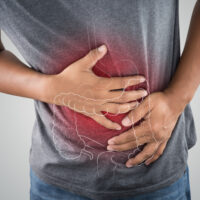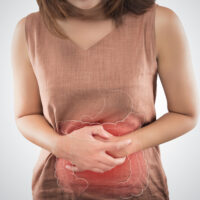A comprehensive guide to finding the right water delivery service
Potable water delivery services are a boon as it eliminates the need to carry heavy bottles of drinking water from stores to your home or office. Staying hydrated is important for overall well-being and water delivery services ensure that you stay hydrated wherever you are at all times through a hassle-free purchase process.

The kind of water you need
Before you start looking for a water delivery service, you need to decide what kind of water you need at your home or office. Depending on the budget allocated and the consensus in the office, you can opt for any type of water offered by water delivery companies. Some popular options of water include distilled, purified, mineral, and spring water. Some water delivery services also offer high-end types of water such as sparkling, seltzer, and flavored water. You can choose between flavored and unflavored water. In the flavored water category, there are options of sweetened and unsweetened water, or you can get water flavored as per your taste and preferences. These different kinds of water are also broadly categorized as alkaline and purified water.
Springwater contains some amount of minerals and is usually sourced from underground. Distilled water is simply water that has been converted to steam and back to water to remove any minerals and particles. Do note that distilled water is bland and has no taste whatsoever. Another option is purified water, which is water that undergoes purification processes to be chemical-free. It is further decontaminated via distilling, deionizing, or carbon -filtering. Purified looks plain in general; however, some brands offer purified water that is characterized by bubbles. Mineral water is replete with different minerals such as salts and sulfur. Seltzer is basically regular drinking water that has been carbonated with CO2. Soda contains CO2 along with minerals like sodium bicarbonate and disodium phosphate and tonic water contains some amount of sugar and quinine.
Types of water delivery services
There are two types of water delivery services. One is where bottles or jugs of water are delivered in bulk once or twice a week. This is ideal if your business supports green initiatives and is careful of using options that do not cause large carbon footprints. Another option is the daily water delivery service, wherein a fixed amount of water is delivered each day. However, if you think that your office is inaccessible for water delivery services, you can always choose to install a water filtering system in your office premises. Ensure that the option you choose considers the size of the staff, the working hours, cost of the water delivery/filtration systems, and safety policies.
Factors to consider when choosing a water delivery service
Once you have decided on the type of water and the amount you require, it is time to browse through water delivery services around your location. To help you make an informed decision, here are some things you need to keep in mind while choosing a water delivery service.
- Amenities provided
A water-delivery company does not only deliver water to your office, but also provides other amenities such as water coolers and dispensers. Some water delivery companies provide these free of cost, while some charge you an additional fee. The type of cooler and dispenser depends on how many gallons of water you need each day. Some water delivery companies that also deliver other breakroom items such as coffee, snacks for the vending machine, or candies.
Some water delivery companies also offer hot water. However, this is only useful to small businesses that do not have a designated break room as you may need hot water on demand for making tea or coffee. If your establishment requires this, then you can look for a water delivery service that offers a hot water dispenser as well.
- Delivery schedule of water
When choosing a water delivery service, find out whether they will be able to work around a delivery schedule suitable for your business. You can opt for a delivery service that offers weekly, monthly, quarterly, or half-yearly delivery of water. Choose a delivery interval that is best suited to you, depending on the water consumption needs of the office. You must opt for the schedule in such a manner that your office does not fall short of drinking water at any point in between delivery cycles.
- Amount of water to be delivered and the size of the bottle
Consider how much water you need to be delivered at a time and the size of the bottles. Bottle sizes range from 2.5 ounces to 5 gallons. This will also determine the size of the dispenser you need. The amount of water, the size and number of bottles, and the delivery schedule of the water will be interdependent.
- Payment schedule
The cost of the water is affected by the amount of water you buy and the duration of the contract. The contract can be monthly, quarterly, half-annually, or annually. Water delivery services typically offer discounts or freebies for clients that opt for a long-term contract. The longer the duration of the contract, the better the discounts you get. Although, before paying upfront, be sure whether you have chosen the right water delivery service. On the other hand, you can initially opt for a monthly contract to get an idea of the quality of services and then opt for a longer contract based on your experience.
- Quality of water
Thoroughly research the purification and processing steps a water delivery service company implements for drinking water. These processes may vary across brands and most prominent water delivery companies provide this information on their websites or provide documents about the same. You also check whether these processes are sustainable and environmentally friendly.
All the factors mentioned above need to be considered and gauged on the basis of the environmental impact as well. Opting for a water delivery service regularly results in a lot of plastic waste in the form of bottles and dispensers. This is not a problem if your company has a recycling policy in place. However, in the absence of such provisions, you may need to opt for additional recycling services as well.
Benefits of opting for a water delivery service
Potable water is a must in all workplaces so that employees can stay hydrated. Regular water delivery ensures that your office never runs out of drinking water. This ensures the well-being of the employees and plays a role in increasing their productivity. Staying hydrated also helps in avoiding any illness resulting from dehydration and thereby reduces the number of sick leaves by employees.
Advantages of choosing a local company for water delivery
One can find a host of water delivery services that are based locally, as well as, those that have a national presence. However, choosing a local water delivery service is a better option for the following reasons.
- Helps local business grow
By giving business to local companies, you are also helping local businesses grow and contribute to the revenue of the state.
- Get personalized services
Customer service of national brands may lack the care and attention that you will get from a local water delivery service. If you opt for a national water delivery company that does not have a structured presence in your region, then there is a good chance that your grievances might not be resolved quickly. Moreover, big brands do not care much about slow and poor performance in a few regions as it does not affect their overall reputation. However, with a local water delivery service, you won’t face any of these issues as you will be able to get hold of their customer service representative faster. Even if you are unable to do so, you can easily visit their local office and get your grievances resolved.
Top water delivery brands
Here are some popular water delivery companies in the country:
- Sparkletts
This water delivery brand is one of the most trusted in the country. It offers delivery services for packaged water in the capacity of three or five gallons. It is one of the most preferred water delivery services as it provides other breakroom supplies such as coffee, candies, and water dispensers. Apart from water delivery, the company also offers water filtration services for businesses that want to reduce their plastic consumption. Sparkletts offers two distinct filtration options under this category – activated carbon filtration and reverse osmosis filtration.
- Absopure
Absopure started off as an ice delivery company and now is a popular water delivery company based in Plymouth, Michigan. The brand is also known for delivering breakroom supplies. Absopure offers a diverse range of waters such as natural spring water, purified drinking water, and steam distilled drinking water. Further, it also offers Absopure Plus Electrolyte Water, AmplipHy Alkaline Water, and Mountain Valley Spring Water. It also has its own line of vending machine services for workplaces; dispensing water bottles in a variety of sizes. Other than that, businesses can also opt for water coolers and water filtration services from this company. The brand also takes appropriate green initiatives to balance out its consumption of plastics with its own bottle recycling facility.
- ReadyRefresh
This water delivery brand offers five-gallon water deliveries. Additionally, it also delivers other healthy beverages and supplies. ReadyRefresh caters to all scales of delivery requirements and lets its customers choose the beverage plan and schedule. Customers can also get water dispensers from the brand. ReadyRefresh products can be ordered directly from the company or through other vendor partners like Amazon, CostCo Wholesale, Staples, and Walmart. The company has lucrative discounts and offers at regular intervals, the details of which are available on their website.
- Fiji
Fiji caters to water delivery requirements for homes as well as commercial spaces. The brand offers bottled water in capacities ranging from 330 ml to 1.5 liters, with 12–36 bottles in a single case. These may cost anything between USD 24 and USD 40. Apart from water, Fiji also offers small range accessories such as bottle sleeves and coasters. Fiji offers both one-time delivery as well as a subscription model to its customers. Customers opting for the subscription model can get discounts of up to 20%.
The global bottled water industry is expected to touch USD 307 billion by 2025, with the per capita consumption of water increasing between five liters to eight liters per day. With the growing number of illnesses and scarce water resources, the water delivery industry is expected to boom and expand over the years.
If you are running an organization, you certainly understand that you need to have an uninterrupted supply of drinking water. It ensures that your employees stay hydrated and give their best while on the job. While looking for a suitable water delivery service, more often than not, opt for a local water delivery service. Compare and review offerings of different water delivery services while considering your budget and make an informed decision. You can consider any one of the above mentioned brands in addition to other options. Keep the above mentioned tips in mind and choose the right water delivery service that best meets your requirements in terms of budget, delivery schedule, and type of water.





